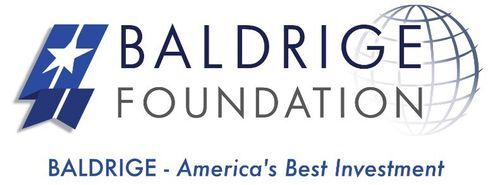Congressional action to establish the Malcolm Baldrige National Quality Award in the Education sector in 1998 resulted in the Baldrige Performance Excellence Program (BPEP) developing an education-specific version of the Baldrige Excellence Framework. Beyond Feedback, a Foundation partner organization that offers Baldrige-based customer and employee feedback assessments, is the lead sponsor of the 2017-2018 revision.
The adaptability of the Baldrige Framework is evident in the education sector as a wide variety of organizations have used Baldrige to achieve success. To date, a total of eleven education organizations have received the National Quality Award. Of those, eight are K-12 schools or school systems and three are in higher education, demonstrating that Baldrige can be scaled to many different-sized organizations. The school systems are from all parts of the country and are of different sizes with widely varying student demographics. Baldrige works in all of these varied circumstances.
The true power of Baldrige for education is its focus on the systems level. Jeffrey Lucas, former Deputy Director of BPEP, makes the argument that many of the performance measurement systems used in education focus on student achievement data to the exclusion of measuring things that could truly innovate education to the betterment of students. “While the improvement of student learning must remain at the core of what education systems are about, achievement data alone are not sufficient to drive the types of performance improvements required and do not acknowledge that schools and districts are in fact complex systems.”
The importance of this thinking becomes apparent when one examines the experience of Baldrige Award winning school systems. Schools, administrators, and teachers are balancing multiple, often competing factors, that leave schools with inadequate resources, teachers with not enough time, and students with difficulty focusing on learning. As a systems-level tool, Baldrige can help school systems align their processes and smooth over many of those seeming conflicting factors
With its focus on the student, teachers, staff, and families as the customers, Baldrige also helps school systems recognize where frustrations may rise and satisfaction diminished. Baldrige helps schools spend their limited resources time on the things that really make a difference, which is why the data show that Baldrige schools improve education and change the lives of their students and families, often without any increase in budgets. Some of the specific improvements in educational management and outcomes include:
- Charter School of San Diego (CSSD) serves an at-risk student population with students on average 2-3 grade levels behind their peers in language arts and 3-4 grade levels in math achievement. Yet CSSD’s dropout rate of 2.4 percent outperformed the county-wide rate of 2.7 percent in 2013 and 3.1 percent in 2014.
- CSSD maintained overall student and parent satisfaction levels of close to 100 percent for 2010-2015.
- Despite having one of the most rigorous graduation requirements in the state, Pewaukee School District achieved a 97.4 percent graduation rate in 2013 and had a higher rate in 2009-2012 than any other county district.
- Montgomery County Public Schools (MCPS) achieved the highest graduation rate of any large school district in the nation in 2008 and 2009.
- MCPS narrowed the achievement gap between Caucasian and African American students by 13 percentage points from 2006 to 2010.
- Iredell-Statesville Schools improved its academic composite ranking from 55th to 9th in North Carolina, increased its graduation rate from 61 percent to 81 percent (11th in the state), achieved higher average SAT scores than the average score in peer districts, the state as a whole, and for the nation, remaining 107th out of 115 school districts in North Carolina in expenditures per pupil.
- The dropout rate for Jenks Public Schools dropped from 6.3 percent in 1994 to 1.2 percent in 2004.
In higher education:
- The number of students completing the core curriculum at Richland College, preparing them to transfer to a four-year institution, more than tripled from 2002 to 2005.
- Students performance on nationally-administered exit exams at Kenneth W. Monfort School of Business exceeded the national average and reached the top 10 percent in 2003-2004.
- From 1996 to 2001, the job placement rate for graduates of the University of Wisconsin-Stout was at or above 98 percent.
All of these colleges, schools, and school districts achieved these dramatic improvements while managing stagnant budgets and cuts in education funding. This is clear evidence that #BaldrigeTransformsLives.


